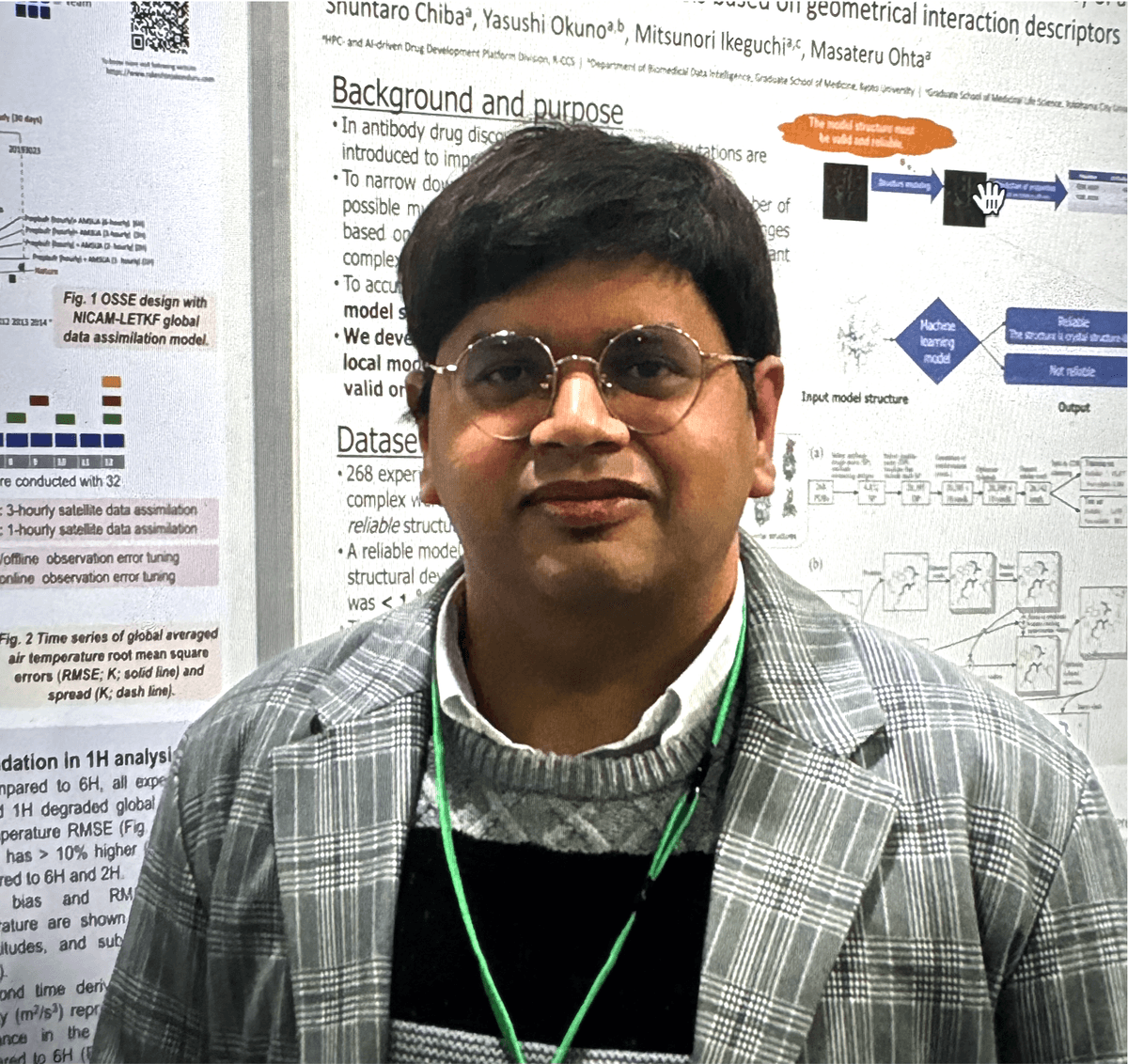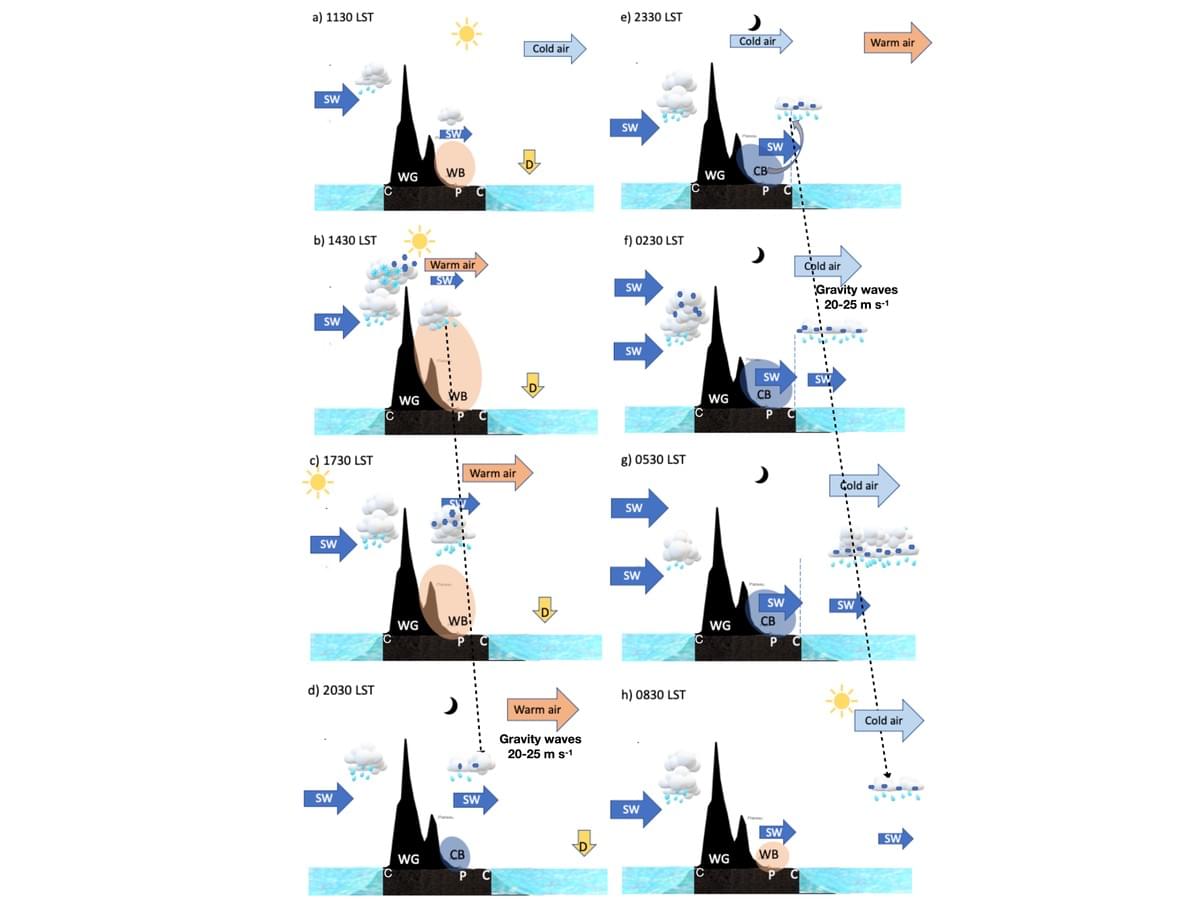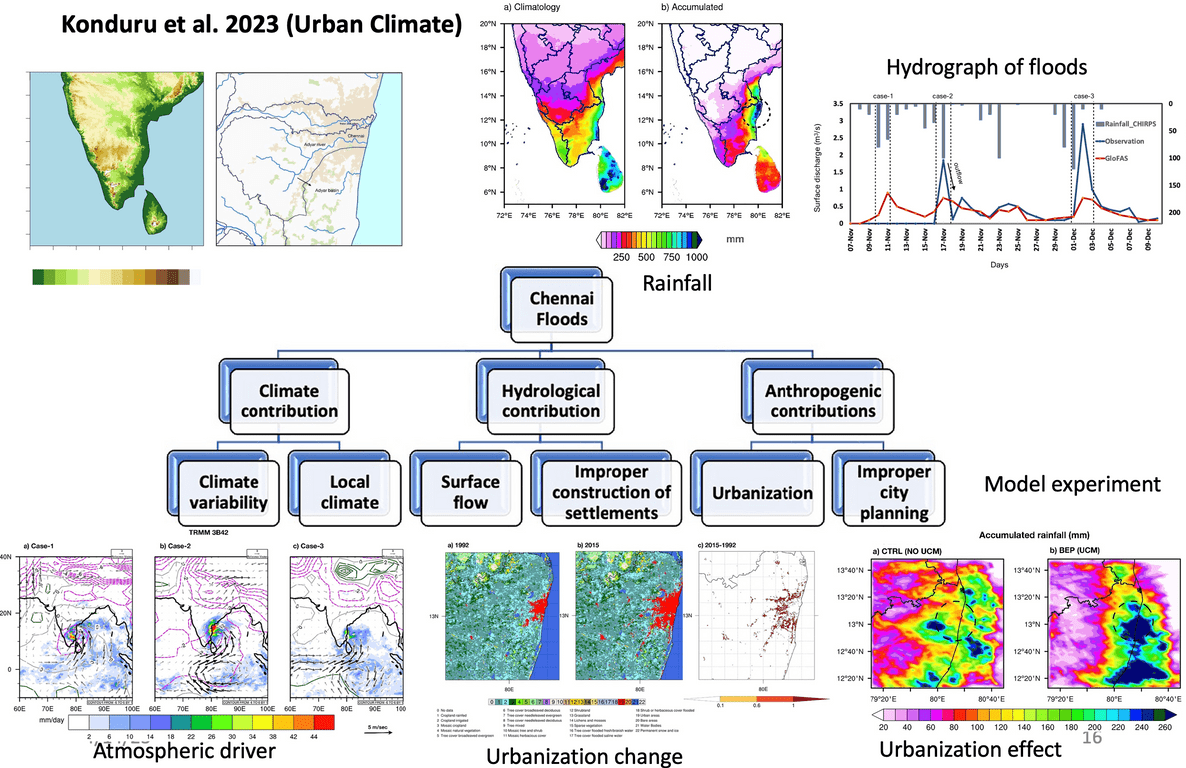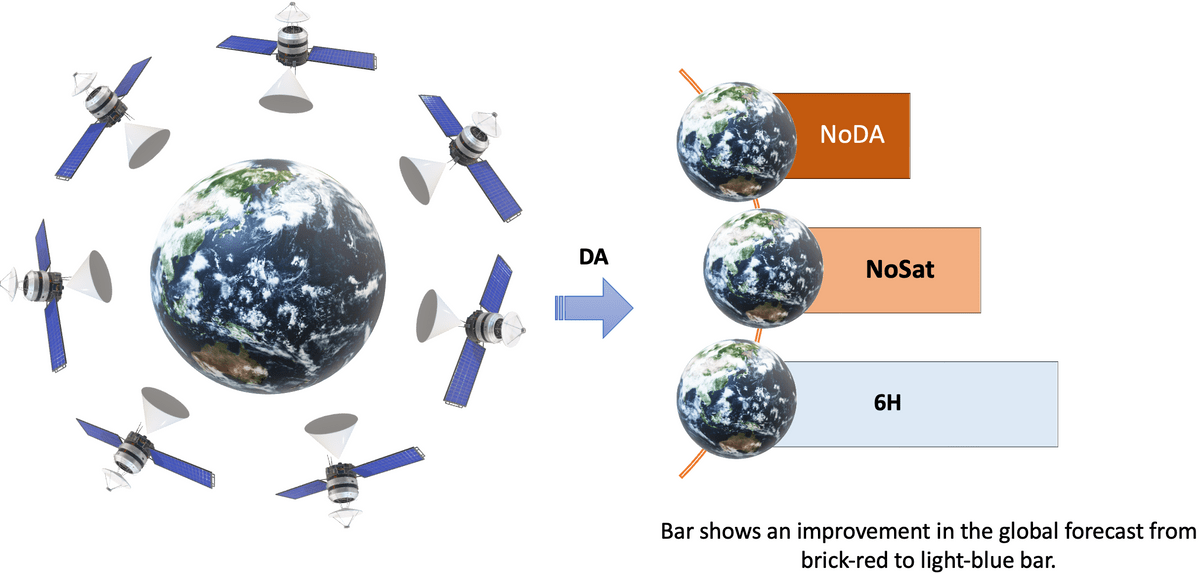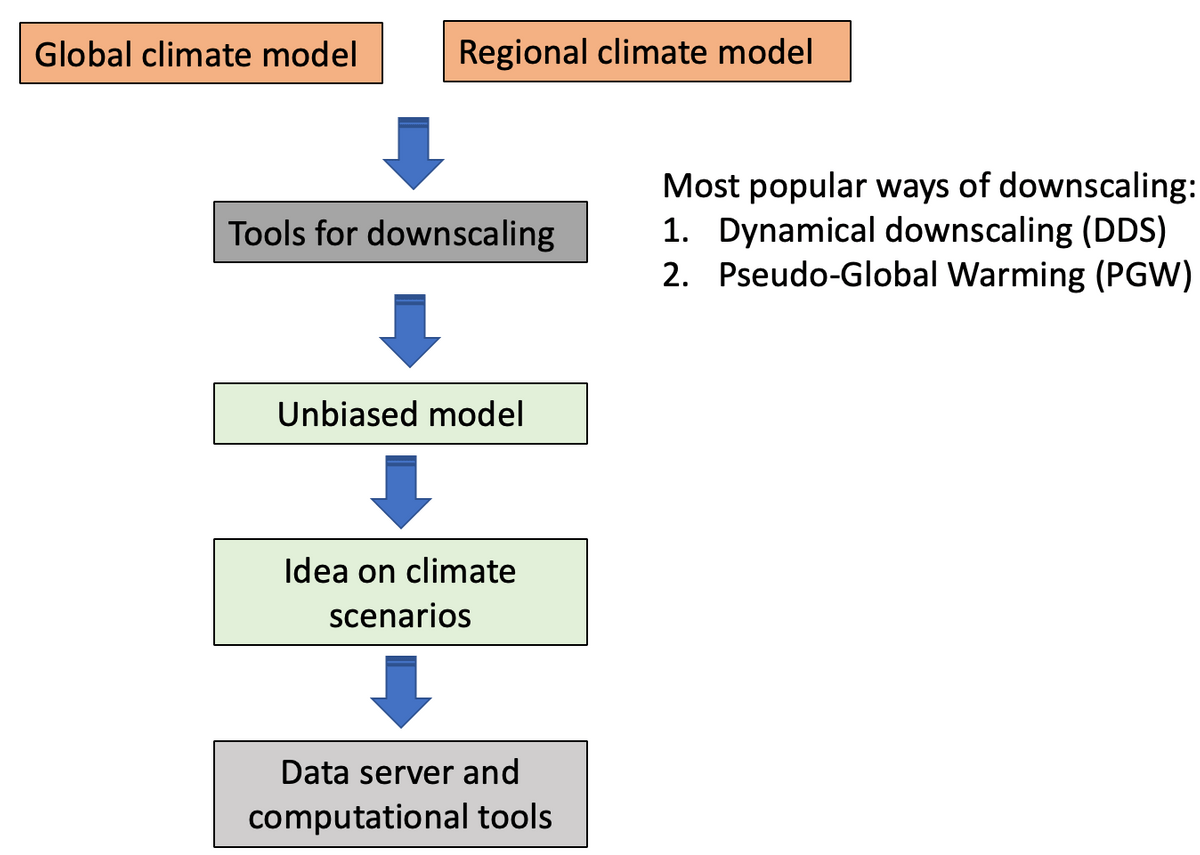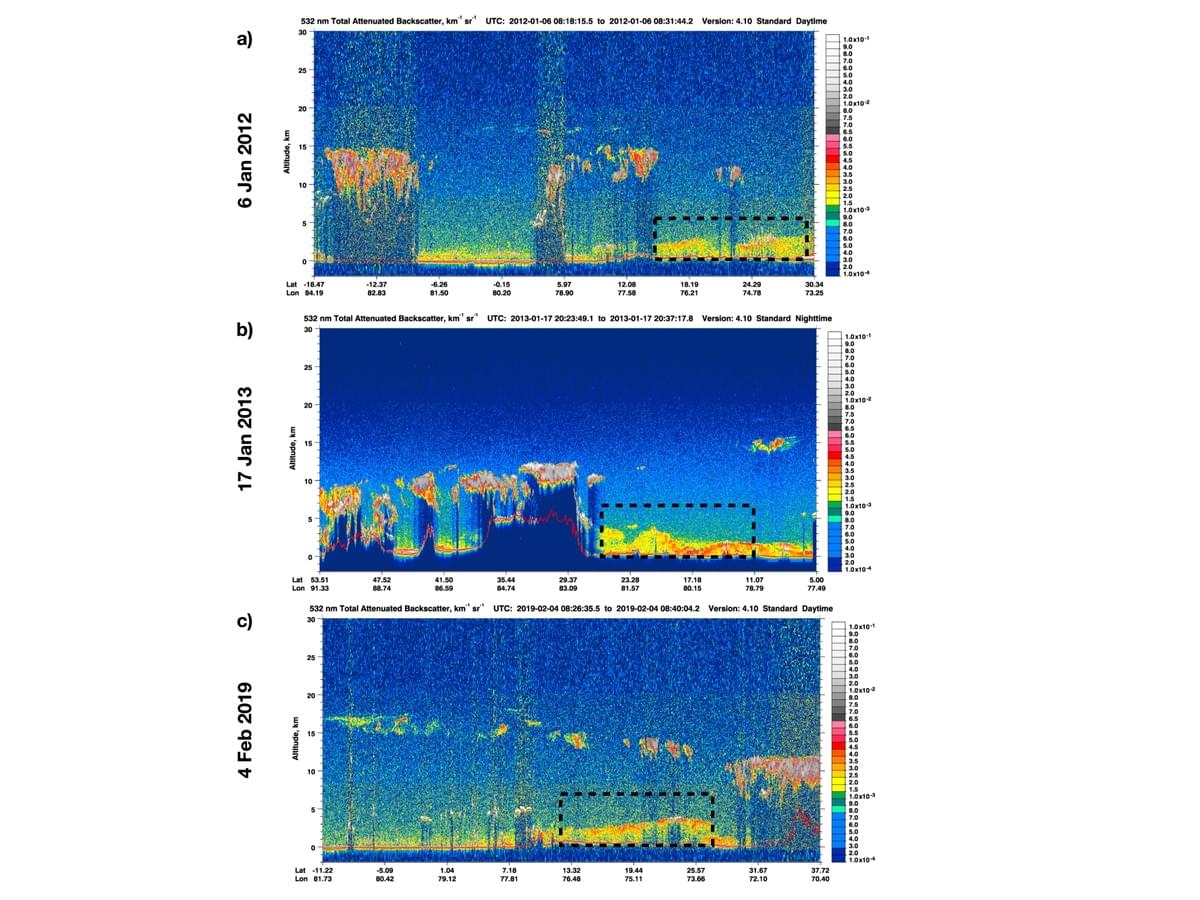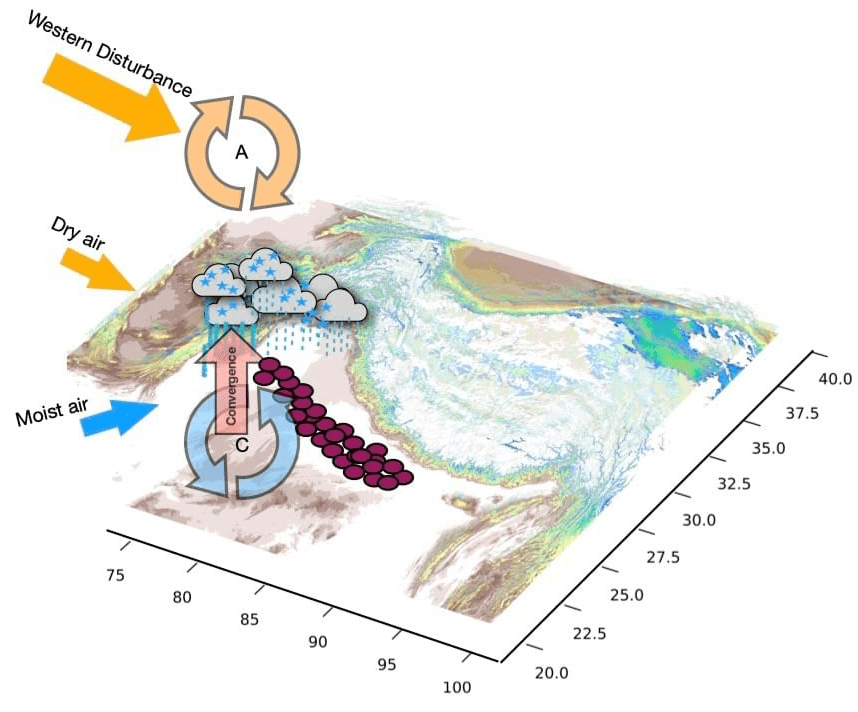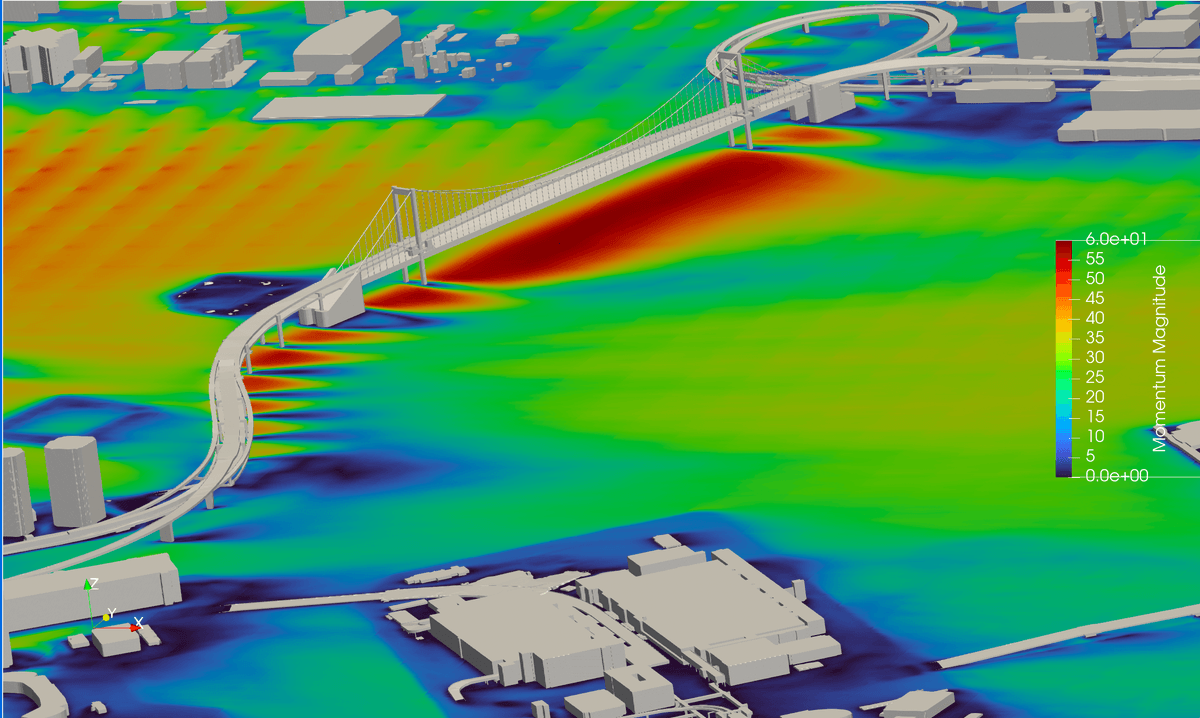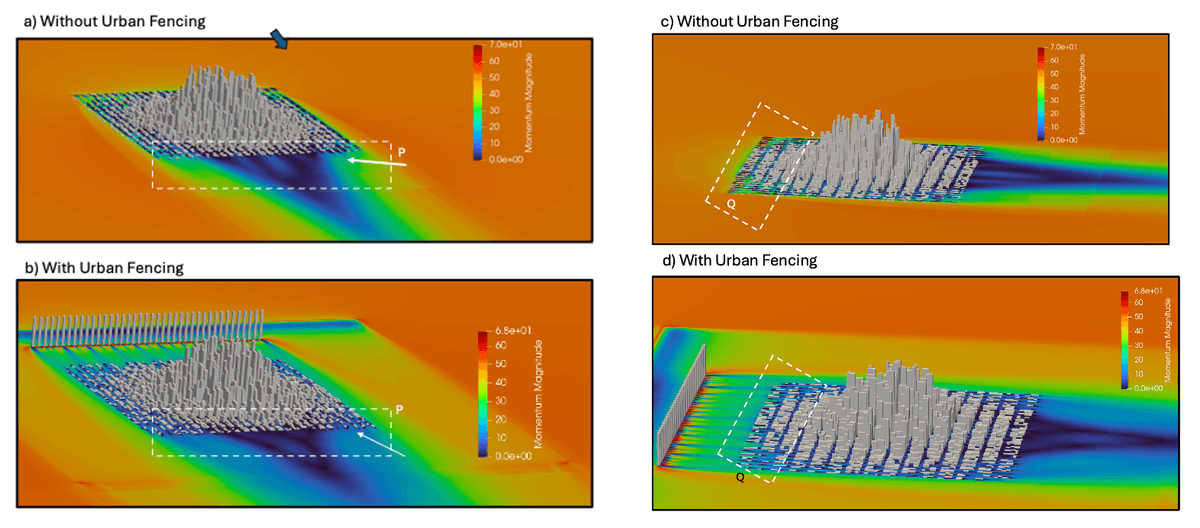

Welcome to my webpage.


Welcome to my webpage.


Outline
I am currently working on convection representation in climate models. If convection is not accurately represented, what kind of errors does it pose in the climate simulations? Do current climate models have skill in representing convection, then how to quantify them? How important is the diurnal cycle? Another challenging area is, how convection responds under different forcings and scenarios in the climate models. How can data assimilation improve convection representation? How can we use data assimilation and artificial intelligence to understand convection?

Konduru Rakesh Teja is a researcher, meteorologist, climatologist, and statistician.
Interest Areas
- Meteorology & Climatology
- Climate modelling
- Data assimilation & Artificial intelligence
- Urban climate
- Remote Sensing
- Statistics
Affiliations
- Graduate School of Information Sciences, University of Hyogo, Kobe, Hyogo, Japan.
- Osaka Central Advanced Mathematical Institute, Osaka Metropolitan Univeristy, Osaka, Japan

Academics
Education
- PhD Science Tokyo Metropolitan University, Tokyo, Japan 2021
- Master of Science Jawaharlal Nehru Technological University, India 2013
- Bachelor of Science Sri Venkateswara University, India 2010
Research Experience (12 Years)
- Project Researcher University of Hyogo, Kobe, Hyogo, Japan (2025)
- Special Researcher Osaka Metropolitan University, Osaka, Japan (2025)
- Postdoctoral Researcher RIKEN Center for Computational Science, Japan (2022-2025)
- Special Researcher Tokyo Metropolitan University, Japan (2021-2022)
- Senior Research Fellow National Aerospace Laboratories, India (2015-2017)
- Research Fellow CSIR 4th Paradigm Institute, India (June, 2015-September, 2015)
- Research Fellow Indian Institute of Technology Delhi, India (2013-2015)
Awards:
1. RIKEN Letter of Appreciation from the President for the Research. (2024)
2. Best Poster Presentation Award 2024 at the ISDA, Kobe, Japan. (2024)
3. Highly Commendable Presentation Award at the IPWG international conference, Tokyo, Japan.
(2024)
4. Tokyo Metropolitan Government awarded the Tokyo Human Resources Fund for City Diplomacy
(THRF). (2017-2021)
5. Tokyo Metropolitan Government awarded a Student Travel Grant to attend the Asia Oceania
Geosciences Meeting. (2019)
6. American Geophysical Union (AGU) awarded a Student Travel Grant to attend the AGU meeting in New
Orleans, USA. (2017)
7. Jeju National University provided Jeju Sea Grant under the umbrella of the World Weather Research
Program (WWRP; 2017).
8. Helmholtz Ocean System Science and Technology, Helmholtz Ocean Research Center, Kiel, Germany
granted me a Helmholtz Travel Grant to participate in the graduate research school. (2015)
9. Air Force Administrative College, Coimbatore, India, gave Best Student Award in the training program
“Basics of Radar & Satellite Meteorology and Applications in Nowcasting” from 10-21 Dec 2012.
10. World Meteorological Organization (WMO) Student Travel Grant. (2012)
Publications
13. Konduru, R. T., Bale, R., and Tsubakura, M. (2025). Energy cascading in urban flows under adiabatic and isothermal conditions: Insights from 2-m large eddy
simulations. Turbulence, Heat and Mass Transfer 11 (THMT ’25), Tokyo, 2025 Begell House, Inc., 8 pages. (Accepted)
12. Konduru, R. T., Bale, R., Tsubakura, M., and Miyoshi, T. (2025). Transforming Urban Wind Engineering by Taming Extreme Weather Strong Winds Over
Urban Skylines with Ultra-High-Resolution Simulations on Supercomputer Fugaku. In Supercomputing Asia 2025 (SCA ’25), Singapore. ACM, New York,
NY, USA, 9 pages. https://doi.org/10.1145/3718350.3718353 (In press)
11. Vivek S., Srivastava, A. K., Gupta, A., Konduru, R. T, et al. (2024) Intensification mechanisms and moisture dynamics of super cyclonic storm ‘Amphan’
over the Bay of Bengal: Implications for aerosol re-distribution. Science of The Total Environment, 951, 175501.
https://doi.org/10.1016/j.scitotenv.2024.175501.
10. Gupta, A., Konduru, R. T., and Vivek, S. (2024). Satellite sensed summer monsoon torrential rain events characteristics along the Himalayan regions of
North India and their dynamics. Atmospheric Research, 107077. https://doi.org/10.1016/j.atmosres.2023.107077
9. Konduru, R. T., Mrudula, G., Vivek, Singh., Srivastava, A. K., and Abhay, K. S. (2023) Unravelling the causes of 2015 winter extreme rainfall over
Chennai: Influence of atmospheric variability and urbanization on the hydrological cycle. Urban Climate, 47, 101395.
https://doi.org/10.1016/j.uclim.2022.101395
8. Konduru, R. T., Matsumoto, J., Yokoi, S., and Mori, S. (2022) Climatological characteristics of nocturnal eastward propagating diurnal precipitation
system over southeast India during summer monsoon: Role of mountain-plain-sea circulations and Gravity waves. Meteorological Applications, 29 (6).
7. Konduru, R. T., G. M. (2021). Effect of offshore troughs on the South India erratic summer monsoon rainfall in June 2017. Dynamics of Atmospheres and
Oceans. https://doi.org/10.1016/j.dynatmoce.2020.101187
6. Singh, V., Konduru, R. T., Srivastava, A. K., Momin, I. M., Kumar, S., Singh, A. K., ... & Sinha, A. K. (2021). Predicting the rapid intensification and
dynamics of pre-monsoon extremely severe cyclonic storm ‘Fani’ (2019) over the Bay of Bengal in a 12-km global model. Atmospheric Research, 247,
105222.
5. Konduru, R. T., Takahashi, H. G. (2020). Effects of convection representation and model resolution on diurnal precipitation cycle over the Indian
monsoon region: Toward a convection‐permitting regional climate simulation. Journal of Geophysical Research: Atmospheres, 125, e2019JD032150.
4. Konduru, R. T., Takahashi, H. G. (2020). Seasonal differences in the land-atmosphere coupling over South Asia simulated using a regional climate
model. Geographical reports of Tokyo Metropolitan University, 55, 23-34.
3. Long, T. T., Konduru, R. T., Matsumoto, J. et al., (2019): Autumn rainfall increasing trend in South Central Vietnam and its association with changes in
Vietnam's East Sea surface temperature, Geographical reports of Tokyo Metropolitan University, 54, 11-22.
2. Konduru, R. T., Kishtawal, C. M., and Shah, S. (2013). A new perspective on the infrared brightness temperature distribution of deep convective clouds.
Journal of Earth System Sciences, 122(5), 1195-1206.
1. Konduru, R. T., (2012). The effect of El Niño and La Niña on the Tropical Cyclones of the North Indian Ocean. Indian Ocean Tropical Cyclone Conference,
New Delhi, RSMC, WMO, WWRP 2013-1.
Book Chapters
1. Konduru, R. T., Matsumoto, J., Gupta, A., and Singh, V. (2025) Synergizing Satellite Sensed Scatterometer Winds and Convection-Permitting Simulations for
Enhanced Coastal Rainfall Predictions in India. In. Sartajvir, S., Reet, T., Dileep, K. G., David, L., and Vishakha, S., Earth Observation using Scatterometers: State-
of-the-Art Techniques, Applications, and Challenges, 4 (1-14), Elsevier Ltd., 9780443313806. (In Press)
In preparation
7. Sudip, P., Konduru, R. T., and Avtar, R. (2025). Unraveling the Characteristics of Satellite-Sensed Precipitation Across
Nepal: Implications for Water Resource Management and Disaster Risk Reduction. Earth's Future (Submitted).
6. Konduru, R. T., Otsuka, S., Liang, J., and Miyoshi, T., Enhancing Small-Scale Global Weather Forecasting by High-
Frequency Satellite Data Assimilation: A Horizontal Localization Aspect. (In preparation).
5. Konduru, R. T., Liang, J., Miyoshi, T., Terasaki, K., Improving Global High-Frequency Assimilation of Satellite Observations
in NICAM-LETKF by the Adaptive Observation Error Inflation. JGR-Atmosphere (In preparation).
4. Liang, J., Konduru, R. T., Miyoshi, T., and Terasaki, K. Using OSSEs to study the impact of assimilating global coverage
AMSU-A radiance at high temporal frequencies. Atmospheric Science Letters (Ready to submit).
3. Konduru, R. T., Gupta, A., Srivastava, A. K., Singh, V., Vijay, P. K., and Sarangi, C. (2023). Effect of aerosols in the
intensification of winter hailstorms over semi-arid regions of north India. Journal of Hydrometeorology (Under review)
2. Konduru, R. T., Gupta, A., Singh, V., and (2025). A kilometer scale and large eddy simulation of extreme winter rainfall
over the urban environment: Role of urban schemes and microphysics. (Under Review).
1. Konduru, R. T., Kishtawal, C. M., Singh, V., and Adachi, Sachiho (2023) Urbanization exacerbated the winter extreme
precipitation characteristics over southeast India: Insights from kilometer scale regional climate simulations. (In
preparation).
Presentations
Invited Talks
12. Konduru, R. T. and Bale, R. (2025) Large Eddy Simulationss-Empowered Urban Fences Revolutionize Defense Against Typhoon-Force Winds. Free & Open Source Software 4
Geoinformatics (FOSS4G) 2025, I-Site, Osaka Metropolitan University, Namba, Osaka, Japan. (Keynote Talk)
11. Konduru, R. T. and Bale, R. (2025) Exploring Fundamental Turbulent Scales over the Tokyo Bay area under extreme and calm weather scenarios using a computational fluid
dynamics model. Japan Geosciences Union Meeting 2025, AAS03-11, Makuhari Messe, Chiba, Japan. (Invited Talk)
10. Konduru, R. T. (2025) A new insights on the precipitation emulator DigiPrecip for skillful forecasting. at International workshop on the Southeast Asian monsoon rainfall
climatology, Tokyo Metropolitan University, Tokyo on 20th February 2025. (Invited Talk)
9. Konduru, R. T. (2024) Harnessing Satellite Data Assimilation and Large Eddy Simulations to Unveil Extreme Rainfall Over Urban Skylines. at
Science Frontier Geoscience Seminar, School of Science, Osaka Metropolitan University, Osaka on 26th November 2024. (Invited Talk)
8. Konduru, R. T. (2024) Unravelling the Urbanization Effects on the Extreme Rainfall Events: Insights from Mesoscale to Large Eddy Model simulations. at
Department of Physics, School of Science and Engineering, Ateneo de Manila University, Philippines on 23rd May. (Invited Talk: Online)
7. Konduru, R. T. (2023) Seamless predictability of rainfall systems by employing ultra-high resolution computational simulations and their applications. at
Department of Civil Engineering, Indian Institute of Technology Madras, Chennai, India on 13th June. (Guest Lecture)
6. Konduru, R. T. (2023) Challenges in assimilating high-frequency satellite observations and diagnosing high-frequency errors: Insights from global NICAM-LETKF
system. at Space Applications Centre, Indian Space Research Organisation, Ahmedabad, India on 7th June. (Invited seminar)
5. Konduru, R. T. (2023) Seamless predictability of rainfall systems by employing ultra-high resolution computational simulations and their applications. at
Department of Civil Engineering, National Institute of Technology Warangal, India on 6th June. (Guest Lecture)
4. Konduru, R. T. (2023) Challenges in the high-frequency microwave satellite radiances assimilation using NICAM-LETKF in the OSSE framework. at a Data
assimilation seminar co-hosted by the University of Reading and the RIKEN Center for Computational Science. (Online)
3. Konduru, R. T. (2023) Ubiquitous nature of the diurnal cycle of precipitation and its representation in current generation climate models. at an international
workshop on the Climate, water, land and life in Monsoon Asia. Hosted by Tokyo Metropolitan University, Tokyo, Japan.
2. Konduru, R, T. (2023) How to make high-resolution simulations representative of future climate, at a symposium on Examining the impact of Aerosol, Urbanization,
and Irrigation on extreme rainfall occurrences over India using Cloud-Resolving Simulations., at Indian Institute of Technology Madras, India.
1. Konduru, R, T. and Jun Matsumoto (2021) Nocturnal Offshore Propagation of precipitation systems over the Asian tropics observed by satellite TRMM precipitation RADAR., at
Center for Coupled Ocean-Atmosphere Research JAMSTEC, Yokasuka, Japan.
Conference presentations
55. Konduru, R.T., Matsumoto, J, and Kajikawa, Y. (2025). Ubiquitous nature of the diurnal cycle of precipitation and its representation in current generation climate and NWP models.
8th World Meteorological Organization International Workshop on Monsoon (IWM-8), Indian Institute of tropical Meteorology, Pune, India, March 17-21, 2025. (Poster)
54. Konduru, R. T. (2025). Harnessing Satellite Observations and Large Eddy Simulations to Understand and Improve Heavy Rainfall Predictions. RIKEN Center for Computational
Science R-CCS Cafe seminar series, Kobe, Japan, March 14, 2025. (oral)
53. Konduru, R. T., Bale, R., Tsubakura, M., and Miyoshi, T. (2025). Transforming Urban Wind Engineering by Taming Extreme Weather Strong Winds Over
Urban Skylines with Ultra-High-Resolution Simulations on Supercomputer Fugaku. SupercomputingAsia 2025 (SCA ’25), Singapore, March 10–13, 2025. (oral)
52. Konduru, R. T., Liang, J., Otsuka, S., and Miyoshi, T. (2025), Improving Global Precipitation Forecast by Assimilating Frequent Satellite Microwave Observations. R-CCS
Symposium Fugaku, and FugakuNext: Classical, Quantum, and AI, Kobe, January 23–24, 2025. (Poster)
51. Konduru, R. T., Tandeo, Pierre, and Miyoshi, Takemasa (2024). Credibility Score for uncertainty quantification in the data assimilation and machine learning model predictions:
From data to decisions. University of Toyama-RIKEN joint workshop on prediction science, Toyama, Japan. (Poster)
50. Konduru, R. T., and Bale, R. (2024), Exploring Fundamental Mean and Turbulent Scale Interactions and their Tagging over Urban Atmosphere under extreme and calm weather
scenarios using a computational fluid dynamics model. American Geophysical Union Meeting 2024, Washington DC, USA, December 8–13, 2024. (E-lightening, oral)
49. Konduru, R. T., Liang, J., Otsuka, S., and Miyoshi, T. (2024), Improving Small-scale Tropical Precipitation Forecast by Assimilating Frequent Satellite Microwave Observations. 10th
International Symposium on Data Assimilation, Kobe, October 21–25, 2024. (Best Poster Presentation award)
48. Konduru, R. T., Liang, J., and Miyoshi, T. (2024), Adaptive Observation Error Inflation with the Assimilation of High-Frequency Satellite Observations under an OSSE Framework
with NICAM-LETKF. The CRC International Summer School 2024, Lindner & Hotels Resorts, Boltenhagen, Germany, September 15–20, 2024. (Oral)
47. Konduru, R. T., Liang, J., Otsuka, S., and Miyoshi, T. (2024), Improving Small-scale Tropical Precipitation Forecast by Assimilating Frequent Satellite Microwave Observations.
11th Workshop on the International Precipitation Working Group, Tokyo Institute of Technology, Tokyo, July 15–18, 2024. (Poster; Highly Commendable presentation award)
46. Konduru, R. T., and Bale, R. (2024), Exploring Urban-Atmosphere Scale Interactions in Extreme Weather from a CUBE computational fluid dynamics model. 9th GEWEX Open
Science Conference, Sapporo, Japan, July 7–12, 2024. (Poster)
45. Konduru, R. T., Liang, J., and Miyoshi, T. (2024), Adaptive Observation Error Inflation with the Assimilation of High-Frequency Satellite Observations under an
OSSE Framework with NICAM-LETKF. Asia Oceania Geosciences Union 2024 Meeting, Pyeongyang, S.Korea, June 24–June 28, 2024. (Oral)
44. Konduru, R. T., and Bale, R. (2024), Energy Cascading During Extreme and Calm Weather Scenarios Over Urban Atmosphere: Insights from Cube Computational Fluid
Dynamics Model. Japan Geosciences Union 2024 Meeting, Chiba, Japan, May 27–March 31, 2024. (Oral)
43. Konduru, R. T., Otsuka, S., Liang, J., and Miyoshi, T. (2024), Enhancing Small-Scale Global Weather Forecasting by High-Frequency Satellite Data Assimilation: A Horizontal
Localization Aspect. Japan Geosciences Union 2024 Meeting, Chiba, Japan, May 27–March 31, 2024. (Oral)
42. Konduru, R. T., Otsuka, S., Liang, J., and Miyoshi, T. (2024), Enhancing Small-Scale Global Weather Forecasting by High-Frequency Satellite Data Assimilation: A Horizontal
Localization Aspect. Meteorological Society of Japan Spring Meeting, Tokyo, Japan, May 21–March 23, 2024. (Oral; Online)
41. Konduru, R. T., Liang, J., and Miyoshi, T. (2024), Adaptive Observation Error Inflation with the Assimilation of High-Frequency Satellite Observations under an
OSSE Framework with NICAM-LETKF. The First NCU-RIKEN Joint Workshop on Data Assimilation for Severe Weather Prediction, Taipei, Taiwan, February 29–March 01 2024.
(Oral)
40. Miyoshi, T., Ohishi, S., Liang, J., Konduru, R. T., Otsuka, S., Kotsuki, S., Tersasaki, K., Okazaki, A., Tomita, H., Kanemaru, K., Satoh, M., Yashiro, H., Okamoto, K., Kalnay, E.,
Kubota, T., and Kachi, M. (2024), Advances and applications of satellite data assimilation of clouds, precipitation and ocean. American Meteorological Society 104th Annual
Meeting at Baltimore, USA, January 28–February 2, 2024. (Oral)
39. Konduru, R. T., Liang, J., and Miyoshi, T. (2024), Adaptive Observation Error Inflation with the assimilation of high-frequency satellite observations under an OSSE
framework with NICAM-LETKF. The 6th R-CCS International Symposium Science beyond Fugaku: Classical, Quantum, and AI at Kobe, Japan, January 29–30 2024. (Poster)
38. Oscar, P., Sarangi, C., Kuiry, S. N., and Konduru, R. T. (2024), Improvement in extreme precipitation simulation over India through realistic aerosol and Urban landuse
representation. at Indian Institute of Technology Madras, Chennai, India, January 29–30 2024. (Poster)
37. Miyoshi, T., Ohishi, S., Liang, J., Konduru, R. T., Otsuka, S., Kotsuki, S., Tersasaki, K., Okazaki, A., Chen, Y-W, Tomita, H., Kanemaru, K., Satoh, M., Yashiro, H., Okamoto, K.,
Kalnay, E., Kubota, T., and Kachi, M. (2023), Advances and applications of satellite data assimilation of clouds, precipitation and ocean. American Geophysical Union Annual
Meeting at San Francisco, USA, December 11–15. (Oral)
36. Konduru, R. T., and Bale, R. (2023) Energy cascading during Typhoon and calm weather scenarios over the Urban atmosphere: Insights from CUBE computational fluids
dynamics model. 1st International Workshop on Typhoon Reseach (IWTRC 2023), Yokohama National Univeristy, Yokohama, Japan, November 8–9 2023. (Oral)
35. Konduru, R. T., Liang, J., and Miyoshi, T. (2023) Challenges in the assimilation of high-frequency satellite observations using NICAM-LETKF in the OSSE framework,
9th International Symposium on the Data Assimilation (ISDA 2023), University of Bologna, Bologna, Italy, October 16–20 2023. (Poster)
34. Gupta, A., Konduru, R. T., and Singh, V. (2023) Large-eddy simulation-based representation of Urbanization influence on the 2015 Chennai flood event., VII Convection
Permitting Climate Modeling Workshop (CPCM-2023), Bergen, Norway, 29–31 August. (Oral)
33. Gupta, A., Singh, V., Srivastava, A. K., Konduru, R. T., Kanawade, V., and Sarangi, C. (2023) Aerosol induced rare winter hailstorm in a dry region of North India.,
The 6th International Workshop on the Nonhydrostatic Models (NHM-WS-2023), Hokkaido University, Sapporo, Japan, 31 August–02 September 2023. (Oral)
32. Liang, J., Konduru, R. T., and Miyoshi, T. (2023) Exploring the Advantages of Assimilating High Temporal Frequency Satellite Microwave Radiances.,
The 6th International Workshop on the Nonhydrostatic Models (NHM-WS-2023), D-2, Hokkaido University, Sapporo, Japan, 31 August–02 September 2023. (Oral)
31. Konduru, R. T., Otsuka, S., Liang, J., and Miyoshi, T. (2023) Diagnostic Scale Decomposition of RMSE in Data Assimilation: Insights from OSSEs with NICAM-LETKF.,
The 6th International Workshop on the Nonhydrostatic Models (NHM-WS-2023), D-3, Hokkaido University, Sapporo, Japan, 31 August–02 September 2023. (Oral)
30. Miyoshi, T., Ohishi, S., Liang, J., Konduru, R. T., Otsuka, S., Kotsuki, S., Terasaki, K., Okazaki, A., Tomita, H., Chen, Y. W., Kanemaru, K., Satoh, M., Yashiro, H., Okamoto, K.,
Kalnay, E., Kubota, T., and Kachi, M. (2023) Advances and applications of satellite data assimilation of clouds, precipitation, and the ocean. AOGS 20th Annual Meeting,
Singapore, 30 July–04 August 2023.
29. Miyoshi, T., Ohishi, S., Otsuka, S., Taylor, J., Liang, J., Konduru, R. T., Terasaki, K., Kotsuki, S., Honda, T., Okazaki, A. (2023) Experimental platform for design and evaluation
of frequent satellite observations to innovate weather, ocean and land surface prediction. JpGU General Meeting 2023, Chiba, Japan, 21–26 May 2023.
28. Konduru, R. T., Mastao, I., Nodzu, Matsumoto, Jun, and Yamaji, Moeka. (2023) Highest annual and seasonal precipitation of Japan observed by the TRMM PR over
Yakushima island: Role of surface wind convergence and Kuroshio SST., JpGU General Meeting 2023, Chiba, Japan, 21–26 May 2023, ACG30-09. (Flash-talk and Poster)
27. Konduru, R. T., Liang, J., and Miyoshi, T. (2023) Observing system simulation experiment of hourly global coverage of satellite microwave radiances using NICAM-LETKF.,
JpGU General Meeting 2023, Chiba, Japan, 21–26 May 2023, AAS02-06. (Oral)
26. Konduru, R. T., Liang, J., and Miyoshi, T. (2023) High-frequency microwave satellite radiances data assimilation using NICAM-LETKF in the OSSE framework, EGU General
Assembly 2023, Vienna, Austria, 24–28 Apr 2023, EGU23-10561. https://doi.org/10.5194/egusphere-egu23-10561
25. Gupta, A., Matsumoto, J., Konduru, R. T., and Masato, I. N., (2023). Transport and redistribution of aerosol species over south Asia by the monsoon
intraseasonal oscillations. at Tropical Atmospheric Science Conference in March, organized by Royal Meteorological Society. (Online)
24. Konduru, R. T., Jianyu Liang, and Takemasa Miyoshi (2023). High-frequency satellite microwave radiances data assimilation using the NICAM-LETKF OSSE
framework. The 5th R-CCS International Symposium Fugaku and Beyond: Simulation, BigData, and AI in the Exascale Era, 2023, Kobe, Japan. (Poster)
23. Konduru, R. T., Jianyu Liang, Koji Terasaki, and Takemasa Miyoshi (2022). Estimating optimal vertical localization in assimilating AMSU-A satellite radiances at
different frequencies in the NICAM-LETKF OSSE framework. Annual Meeting of Meteorological Society of Japan, Autumn 2022, Kyoto, Japan. (Oral)
22. Konduru, R. T., Masato, I. Nodzu, and Jun Matsumoto (2022). Satellite observed highest annual precipitation of Yakushima and the role of surface wind
convergence. Annual Meeting of Meteorological Society of Japan, Autumn 2022, Kyoto, Japan. (Poster)
21. Konduru, R. T., Masato, I. Nodzu, and Jun Matsumoto (2022). Satellite observed annual and seasonal variation of Yakushima precipitation. Annual Meeting of the
Association of Japanese Geographers, Autumn 2022, Kakegawa, Japan. (Oral)
20. Konduru, R. T., Hiroshi G. Takahashi, and Jun Matsumoto (2022). Explicit convection regional climate simulation of eastward propagating diurnal precipitation over
south India: Role of gravity waves and monsoon low-level circulation. 2022-SPARC Gravity Wave Symposium, online. (Oral)
19. Konduru, R. T., and Hiroshi G. Takahashi (2021). Sensitivity of precipitation intensity and frequency to the land surface resolution in explicit convection climate
simulations over South Asian region. The fifth Convection-Permitting Modeling Workshop 2021 (CPM2021; A2-22): High-Resolution Climate Modeling and Hazards. (Oral)
18. Konduru, R. T., and Hiroshi G. Takahashi (2021). On the sensitivity of land-atmosphere coupling to the model mesh sizes during the Indian summer monsoon: Based
on high-resolution regional climate simulations. Japan Geoscience Union meeting 2021 (JpGU 2021; A-CG32).
17. Konduru, R. T., and Hiroshi G. Takahashi (2021). Representation of diurnal cycle of summer monsoon precipitation in the convection-permitting climate model and its
sensitivity to the current generation cumulus parameterizations. 12th Tropical Meteorology Study Group Meeting, abstracts, 15.
16. Konduru, R. T., and Hiroshi G. Takahashi (2020). Frequency of noon/afternoon convective precipitation dominates on wet surface conditions over Indian summer
monsoon region, Abstracts of Japan Geoscience Union Meeting, AAS10-P15.
15. Jun Matsumoto, Long Trinh Tuan, Konduru, R. T., et al. (2019), Increasing autumn heavy rainfall trend in South Central Vietnam and its relationship with local sea
surface temperature. Abstract of the Oceania Geosciences Society 2019 Meeting, AS03-A016.
14. Konduru, R. T., and Hiroshi G. Takahashi, (2018). Continental-scale simulation of the Indian summer monsoon: Model dependency on convection or grid resolution,
Abstracts of the 2nd GEWEX (Global Energy and Water Exchange) Convection-Permitting Climate Modelling, National Center for Atmospheric Research, Chapter-6, 52.
13. Konduru, R. T., and Hiroshi G. Takahashi, (2018). Continental-scale simulation of diurnal variations in south Asia summer monsoon precipitation: Insights from the
explicit and parameterized convection experiments, Extended abstracts of 5th International Workshop of Non-hydrostatic Models, Japan Meteorological Agency, Japan, 70-
71.
12. Konduru, R. T., and Hiroshi G. Takahashi (2018). Realistic simulation of Indian summer monsoon rainfall in convection permitting weather research forecasting
model, Abstracts of Japan Geoscience Union Meeting, ACG37-P02
11. Konduru, R. T., Gupta Anu, Jun Matsumoto, and Hiroshi G. Takahashi (2017), On the recent warming in the sub-cloud layer entropy and vertical integrated moist
static energy over south Asian monsoon region, Abstracts of American Geophysical Union, A13C-2076.
10. Konduru, R. T., Vivek Singh, (2017). An observational and modeling study of the August 2017 Florida climate extreme event. Abstracts of American Geophysical
Union.
9. Gokul Vishnwanathan, Konduru, R. T., and Mrudula G, (2016). Observational and dynamical aspects of extreme precipitation over Pithoragarh district on 1 st July
2016: A Cloudburst? National Symposium on Tropical Meteorology: Climate Change and Coastal Vulnerability, DOI: 10.13140/RG.2.2.25340.44167
8. Konduru, R. T., Gokul Vishnwanathan, and Mrudula G, (2016). Spatio-temporal variations of feedback mechanism between soil moisture leakage and convective
rainfall during Indian summer monsoon National Symposium on Tropical Meteorology: Climate Change and Coastal Vulnerability,DOI: 10.13140/RG.2.2.20245.01769
7. Konduru, R. T., (2015). To investigate the climate response of North Atlantic Ocean Dynamics to the CO2 and CH4 forcing in NCAR CESM1.2.0 climate model. HOSST
symposium, GEOMAR, Kiel, Germany.
6. S K Mishra, Konduru, R. T., and S K dash, (2015). Understanding the Response of the Indian monsoon to variation in CO2 and Solar radiation using ocean and atmospheric
modelling in a Geo-engineering context, Department of Science and Technology climate change program monitoring meeting, Indian Institute of Technology Delhi, New Delhi,
India.
5. S K Mishra, S K Dash, Swathi, and Konduru, R. T., (2014). Climate Geo-engineering Governance, Hotel Lay Meridian, New Delhi, India.
4. S K Mishra, Konduru, R. T., and S K Dash, (2014). How good is RegCM4.3 for monsoon simulation, International Centre for Theoretical Physics (ICTP), Italy.
3. S K Mishra and Konduru, R. T., (2014). Response of the Indian monsoon to Geo-engineering, 4th GeoMIP Meeting, Paris, France.
2. S K Mishra, Abhishek Anand, Swati Shewale, Konduru, R. T., and S K Dash, (2014). Understanding the Response of the Indian monsoon to variation in CO2 and Solar radiation
using ocean and atmospheric modelling in a Geo-engineering context, DST climate change program monitoring meeting. IIT Delhi, New Delhi.
1. Konduru, R. T., C M Kishtawal, and Danish Hussain, (2012). Nowcasting of Deep Convective system (Thunderstorm) over SHAR. Workshop on decade celebration:
meteorological satellite Kalpana-1 in SAC, ISRO, Ahmedabad, India. Rakesh Teja Konduru (2012). The effect of El Niño and La Niña on the Tropical cyclones of North Indian
Ocean. 2nd International Conference on Indian Ocean Tropical Cyclone (IOTCCC), New Delhi, India.
Workshops and trainings
1. Participated in the second workshop on Local and Remote Influences on Rainfall over India from 18–19 July 2016 at Divecha Center for Climate Change, Center for Atmospheric and Oceanic Sciences, Indian Institute of Science, Bangalore, India.
2. SMART training program on “Introduction to Satellite Scatterometry with a special emphasis of ScatSat-1 Indian satellite” at Space Applications Centre, Indian Space Research Organization, Ahmedabad, India, held during 23-25 November 2016.
3. Training on remote sensing of Earth’s atmosphere & Space Weather in a winter school conducted by University Grants Commission, National Research Center for Physical Sciences, at University of Calcutta, Calcutta, India, held during 4-22 March 2013.
4. Participated in national level training program “Basics of Radar & Satellite Meteorology and Applications in Nowcasting” from 10 to 21 Dec, 2012 held at the Air Force Administrative College, Coimbatore, Tamil Nadu, India.
5. Participated in Climate Research School Conducted by Bjerknes Center for climate research (Norway) and TERI University (New Delhi) at New Delhi from October 3-7, 2011.
Review activity
Geophysical Research Letters
Journal of Geophysical Research- Atmospheres
Earth and Space Science
Journal of Climate
Journal of Atmospheric and Oceanic Technology
Urban Climate
Theoretical and Applied Climatology
Areas of Interest
Snippets of my research

1. Diurnal convection
Diurnal convection is the fundamental process of the precipitation mechanism. Understanding diurnal convection from observations is key to simulating them in models.

2. High-resolution numerical simulations
High-resolution simulations with convection-permitting scales, large eddy scales and very large eddy scales are key to achieving better representation of convection and eddy scale turbulence.

3. Convection interactions with aerosols, urban environment
The recent increase in urban floods and heatwaves explains the possible interactions of convection with aerosols and the urban environment.

4. Data Assimilation and machine learning
Key tools to improve the predictions by assimilating more and the right datasets. Machine learning can act as an artificial memory, which can support the online understanding of a process.

5. Climate Modelling and future projections
A better climate simulation can give an appropriate understanding of the future.

6. Remote sensing
Key tools to observe remote locations can give continuous observations.

7. Winter hail and aerosol interaction
Observation and convection-permitting modelling methods used to understand winter hail and aerosol interactions.

8. Cloudburst classification
Satellite-sensed precipitation estimates and reanalysis were used to generalize summer monsoon cloudbursts along Himalayan foothills into 5 classes with unique mechanisms.

9. Urban energy cascading
How does large-scale wind flow interact with the local urban buildings and settlements?

10. "Urban Fence" to mitigate extreme winds
How does Typhoon like extreme winds can be mitigated using the novel "Urban Fence concept" in the urban regions?
Contact
Leave a message or email me for inquiries.
RIKEN Center for Computational Science,
7 Chome-1-26 Minatojima Minamimachi, Chuo Ward, Kobe, Hyogo 650-0047, Japan
